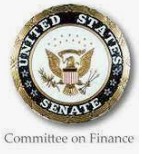 BBA Ltd decides to go for Tax Risk Management
BBA Ltd decides to go for Tax Risk Management
TAKE BBA LTD, part of the international Rialtry Group, (a fictitious name but the facts are real) as an example. They faced a major tax audit on all fronts. The trigger had been an article in the Exposé magazine, citing them as having sneaked assets offshore under the radar screen without detection by the IRS, and now they were leaking huge sums of money to a tax friendly jurisdiction, escaping significant tax charges in their country of effective management.
Four years later, they concluded their Tax Risk Management (TRM) process. The process was heralded a great success by the board of directors of BBA Ltd, the Rialty Group, and the IRS. Why?
There were no less than 30 key tax areas that required investigation and audit by the IRS. IRS audit teams were typically given 100 man hours per key tax area to audit, and then would be expected to deliver a result through revised assessments. Three thousand man hours would have been spent completing all the audits to arrive at a result for the IRS. This would have meant an equal, if not greater amount of time and resource to be spent by BBA Ltd. With a very small tax department, they would have had to hire an extensive number of outside consultants at great expense.
What was at stake for BBA Ltd? With hindsight now, they were facing a potential tax exposure of about $300m, plus penalties and interest of another $300m to be added. Had the IRS thrown 3000 man hours at the process they would have raised BBA Ltd as a debtor of in the region of $600m. On the total man hours spent, the IRS would be looking to collect as much of that $600m as they could.
Again, with hindsight, and the conclusion of the TRM processes suggested in this Special Report, the IRS spent less than 100 man hours. Because the taxpayer completed and controlled its own tax audit, internally, and self-disclosed to the IRS the outstanding amounts of tax that they had found definitely to be due to the IRS, it turned out that they had to pay much less that the $ 600m estimated. A host of potential transactions that the IRS may have been inclined to investigate, had they controlled the audit process, were cleared and no revised assessments were issued, where under more adversarial circumstances the IRS may have treated the process otherwise. At the end of the day, a fraction of the $600m was raised in revised assessments.
For the taxpayer, what was the result? They faced tax charges up to $600m. This equated to three times more than the estimated income tax burden of the taxpayer for the year of assessment. Through a carefully implemented TRM process, and by being completely transparent, they reduced their feared tax exposure to a fraction of that amount. A substantial tax saving. Plus, had the IRS spent 3000 man hours, the taxpayer would have spent at least double that time hiring professionals to defend the legal actions of the IRS. The additional cost to BBA Ltd time, effort and expense would have equated to about $10m to bring the tax disputes to conclusion. The costs associated with the TRM process were one third of that amount.
All round, a significant saving of time, energy and expense, and the result was satisfactory to all.
In accordance with Circular 230 Disclosure




















Recent Comments